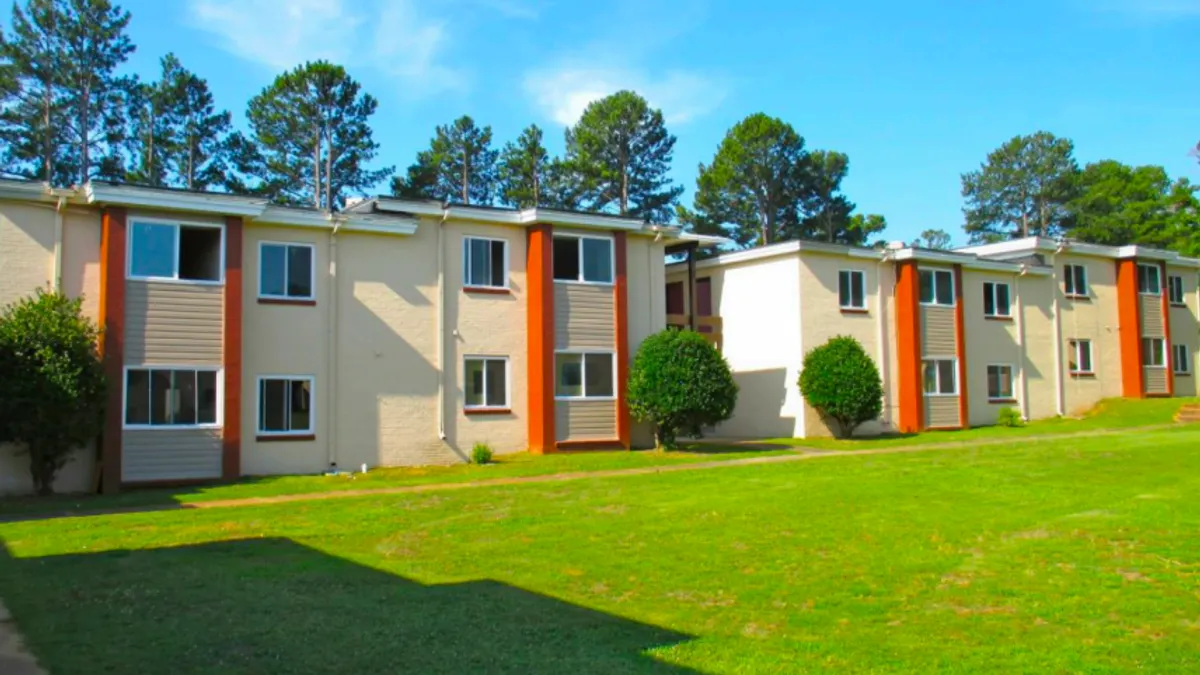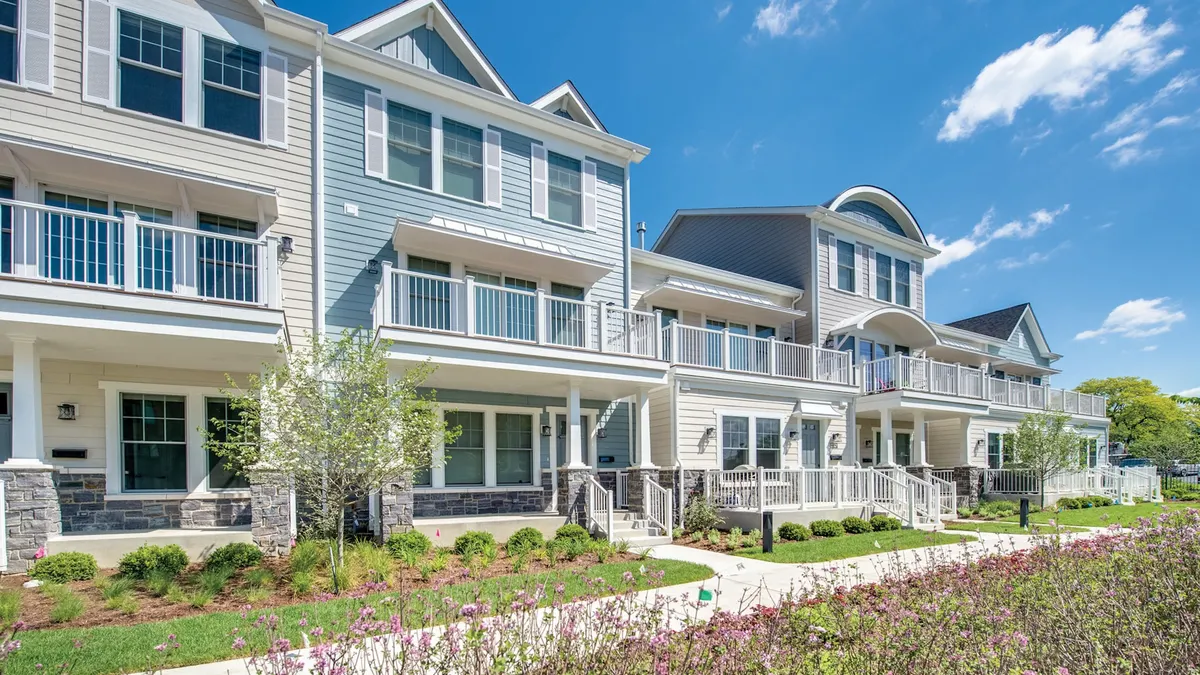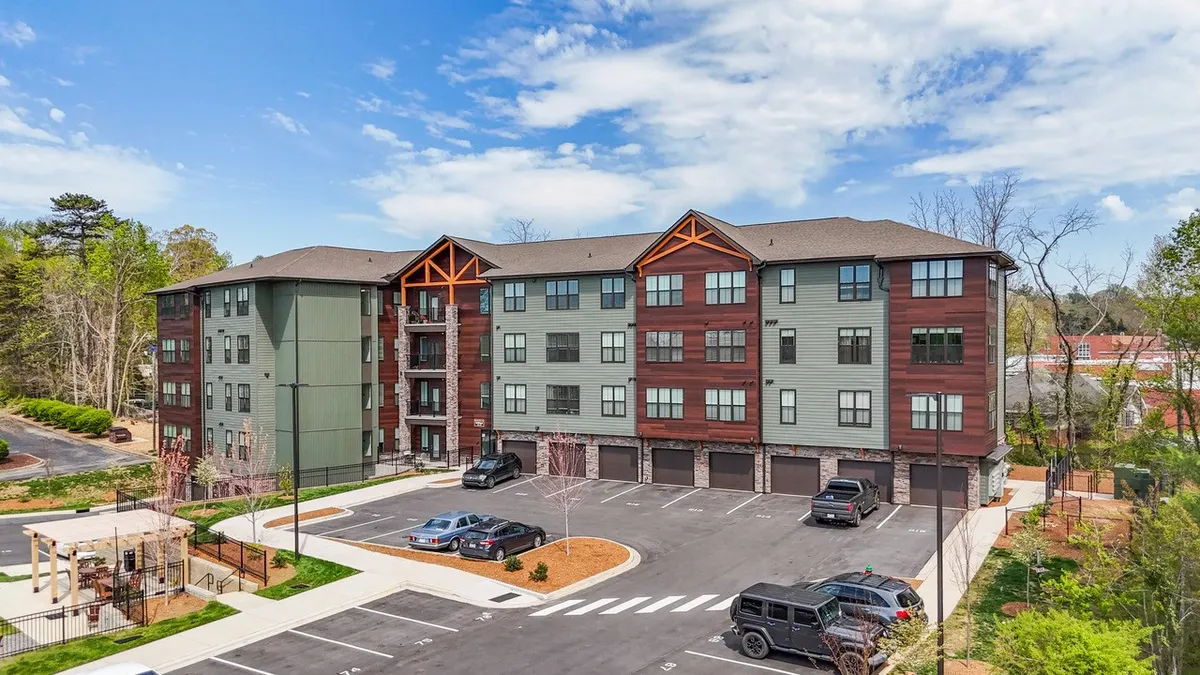In a third quarter where other big REITs produced results that came in below expectations, on Nov. 6 Camden Property Trust posted core funds from operations per share of $1.70, which beat the Bloomberg consensus of $1.68.
However, the Houston-based REIT’s outperformance wasn’t driven by same-store revenue growth, which came in at 0.8% compared to JPMorgan’s 1.2% estimate. Instead, Camden saw better-than-expected expense performance at 2.3% due to property tax relief, compared to a 3.5% projection. With that win, the REIT raised its core FFO per share outlook by $0.04 at the midpoint.
Camden’s blended lease spreads came in at 0.6%, both below JPMorgan’s estimate of 1%. Camden’s executives noted their blended lease rate only fell 10 basis points from Q2, which they said was the lowest deceleration in the apartment REIT space.
However, analysts saw a year-end slowdown in Camden’s results.
“We think the stats here show what we’ve seen throughout the apartment REIT earnings season, which is the deceleration of spreads and trends to end 2025, though we note that CPT’s turnover [44%] actually improved quarter over quarter while many of its peers went the other way,” wrote Anthony Paolone, executive director at JPMorgan, in a research note shared with Multifamily Dive.
New lease rents continue to struggle
Echoing a theme reported by other REITs, Camden continued to see issues with new lease rents, which dropped 2.5% compared to 2.1% in Q3 2024. Renewals increased 3.5%, though they rose 4% in the same quarter in 2024.
“As we were going through the end of the third quarter, we did make a push on the occupancy side,” said Camden CEO Ric Campo on the Q3 call on Nov. 7. “And when we made that push on the occupancy side, that was at the expense of some new lease growth.”
While supply was a headwind, Camden benefited from strong demand. CEO Ric Campo said that 2025 has been the best year in more than two decades for apartment absorption.
“What's driving that is the same thing that's been driving apartment demand for a long time, migration, demographics, and today we have even a more interesting one, which is retention,” Campo said on the call.
Part of the strong retention comes from fewer move-outs to purchase a home. In Q3, only 9.1% of residents left the REIT’s properties for this reason — a record low for the company.
We’re “retaining more people than we ever have, which means that we don't need as many people coming in to lease new apartments when the people are moving out,” Campo said.
Market report
While other REITs expressed concern about the Washington, D.C., metro area, Camden executives said the market was their top sequential revenue market in Q3, after getting a boost from government return-to-office mandates earlier in the year.
“We are still not seeing any evidence of our consumer being directly impacted by DOGE,” Camden’s Senior Vice President of Real Estate Investments Stanley Jones said on the call.
Camden saw second-quarter improvements in Dallas; Charlotte, North Carolina; Atlanta; and Nashville, Tennessee.
“While we’ve experienced elevated supply in these markets, we're starting to see really some encouraging signs … as demand really remains strong,” Camden Chief Operating Officer Laurie Baker said on the call. “On total rent gain for renewals and new leases, blended rents have actually turned positive in Dallas, Charlotte and Nashville, and we're also seeing improvements in Atlanta.”
BY THE NUMBERS
| Category | Q3 | YOY Change |
| Property revenue | $374.7 million | 0.8% |
| Net operating income | $237.9 million | 0.0% |
| Operating expenses | $136.8 million | 2.3% |
| Core funds from operations | $1.70 | -0.6% |
| Occupancy rate | 95.5% | -10 bps |
SOURCE: Camden
But deliveries still remain an issue in Nashville. It joins Denver and Austin, Texas, as metros where Camden continues to deal with lingering supply and faces concessions of about 10%, Baker said.
“Despite these headwinds, we've been able to kind of navigate these markets pretty well, and we're outperforming the market average each with limited pricing power,” Baker said.
Supply burns off
Overall, Camden is facing less supply than it dealt with a year ago. At one point, 20% of its assets were facing new supply. Now, that number is 9%, which should provide the company with some cushion even if demand falls off next year.
“For us, the good news is we don't need as much demand, because we have less supply coming in, and we have retention rates that are at historic highs,” Campo said. “So we have fewer people moving out, so we don't need as many people to move in to offset those folks.”
Camden’s executives are taking an optimistic view of 2026, even though they aren’t ready to provide official guidance. They think uncertainty around taxes and tariffs should be worked out in the year ahead.
Campo said he hopes the Trump administration will be motivated to try to iron out economic issues with the midterm elections around the corner.
“Unless something really comes off the rails, it should be a reasonable environment to improve demand and to create a more optimistic scenario in 2026,” Campo said.
Click here to sign up to receive multifamily and apartment news like this article in your inbox every weekday.

















